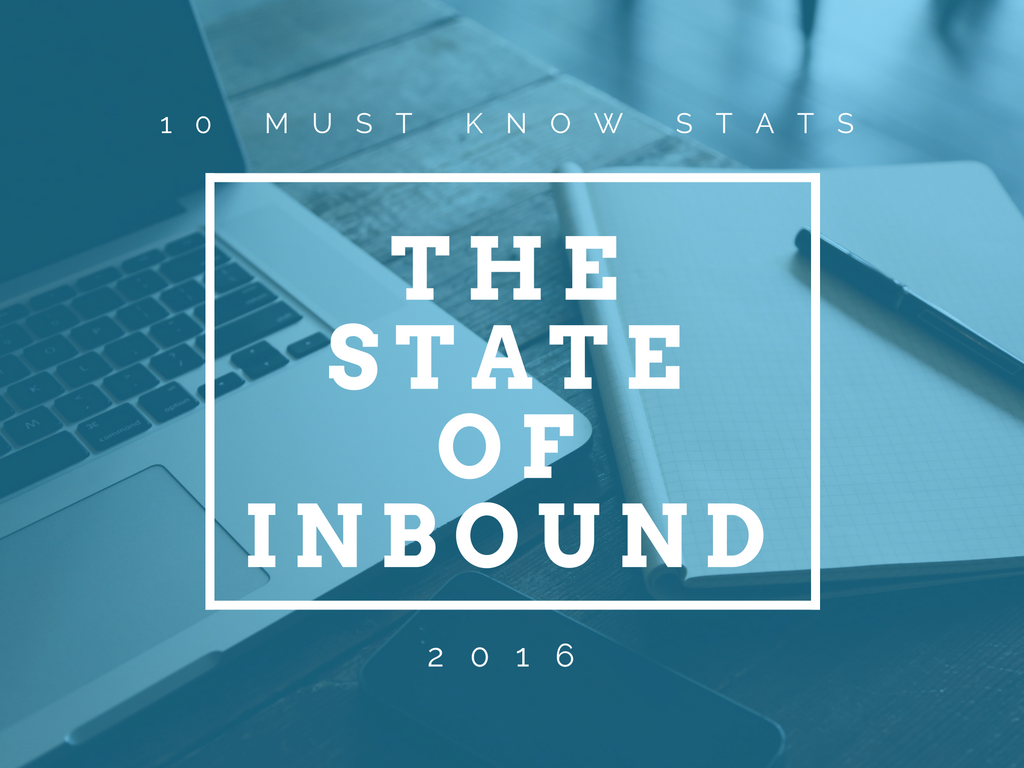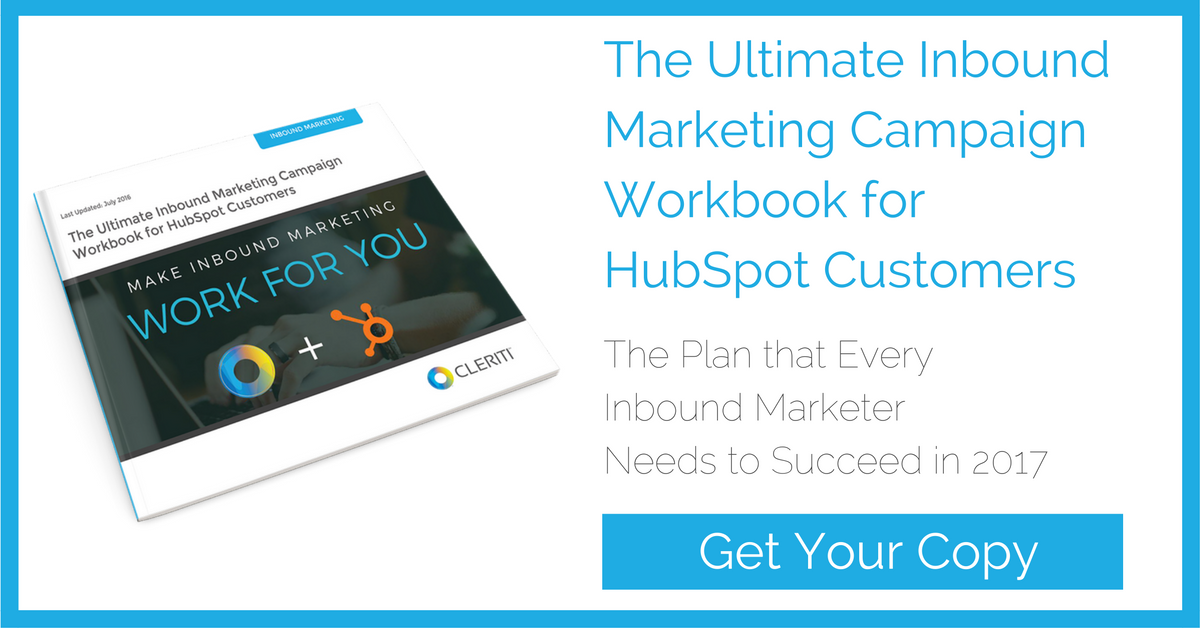- Oct 12, 2016
- By Jen Barnhart
- In Inbound Marketing
10 Stats You Should Know about the State of Inbound Marketing 2016

HubSpot recently released the State of Inbound 2016 report, an anonymous, global survey answered by over 4,500 respondents — HubSpot and non-HubSpot customers, B2B and B2C and small and mid-sized businesses — conducted from February 2016 through May 2016.
While some of the findings are to be expected, there are a few surprises this year.
1. Focusing on Leads
In 2014 and 2015, many companies prioritized lead generation. Companies priorities for 2016 have shifted slightly: A whopping 74 percent of respondents picked converting contacts/leads to customers as their top marketing priority for the next 12 months. It looks like many companies were successful in generating those leads in 2014-2015, and now they’re looking to refine their conversion methods. Maybe 2017 and 2018 will see companies place customer retention and brand advocacy as a top inbound marketing priority, which takes us to our next stat.
2. Increasing Revenue from Existing Customers
Would you be surprised to know that an increase of 5 percent in customer retention results in a 25 percent to 95 percent increase in profit? Not only are existing customers more profitable, the cost of retaining your existing customers is only 11 percent of the cost of acquiring new customers. It really does pay to think about how you want to acquire and convert new leads, as well as what you’re going to do to wow them over and over again once they make a purchase. Despite these potential gains, only 46 percent of survey respondents listed their top priority as increasing revenue derived from existing customers.
3. Inbound Budgets and Calculating ROI
With lead conversion a top priority for most companies, , it’s not surprising to see that marketers who are able to calculate their ROI are 1.6x times more likely to receive a budget increase. What is surprising is that companies who don’t calculate marketing ROI cite economic conditions as the main factor in allocation of their marketing budget, and they’re less confident in their marketing strategy. The takeaway: you can take charge of your marketing strategy and gain confidence in your skills and talents by knowing what works and what doesn’t.
4. Growing SEO and Organic Presence
Blog content creation, the top inbound marketing project priority for 2014 and 2015, was bumped to second place this year as 69 percent of respondents chose growing SEO/organic presence as their top project priority, proving that SEO isn’t dead.
SEO is changing, though.
Search engine algorithms are quicker, smarter, and pickier. They’re better at understanding syntax and context, not to mention they’re using social, mobile and video keywords for ranking. SEO best practices from as little as three years ago are already outdated, and marketers today need to stay up-to-date on best practices for the ever evolving SEO.
5. Adding Video Content in 2017
While 60 percent of marketers are still investing in blog creation, brands are looking for more effective ways to break through the noise and clutter. In the coming year, 48 percent of respondents plan to differentiate themselves by adding YouTube videos to their content repertoire and 39 percent are looking to Facebook video as a differentiator. When the addition of a video on a landing page can increase conversion rates by 80 percent, it’s no wonder more marketers are looking to add videos into their marketing strategy.
If adding video content is part of your upcoming strategy, check out these 12 examples of great marketing videos to inspire you. We’re definitely fans of this trend, so keep an eye out for video content from our team!
6. Writing Company Blogs
Even though video is growing in popularity, blogs are still highly effective at generating leads and building SEO. I’ll admit, I always find it interesting to see how others create blogs. I was a little surprised that 71 percent of respondents have staff generate blog content, while only 19 percent use an agency partner. Without a doubt, the industry expertise your staff can bring to blog content is invaluable, but having expert marketing writers and editors in an agency partner isn’t so bad either. No matter who writes for your company, blogs will continue to work for you well into the future.
7. Blog Length
And since we’re on the subject of blogs, 84 percent of those surveyed have blogs that are less than 1,000 words (42 percent at 500 or less and 42 percent between 501 and 1,000). Given that many studies have show longer blogs, between 1,000 and 1,600 words, perform better, I expected that more than 6 percent of respondents would have blogs in the 1,001 to 1,500 range. I would have loved to see the breakdown by industry on this one. Are there industries that shorter blogs perform better in? Or are shorter blogs a reflection of available time resources?
8. Overrated Outbound
While video and blog creation are pulling their weight for inbound marketers, outbound marketing is considered overrated. 31 percent surveyed choose paid advertising, print and outdoor, as the most overrated marketing tactic.
I think an inbound vs. outbound debate isn’t doing marketers any favors. Both are necessary mediums that must be used effectively. Based on your audiences paths to purchase. Magazine advertising has the highest ROAS across media types, but it will only work if your audience is reading magazines. No marketing efforts should be wasted, but setting holistic — and realistic — goals is key to creating an effective marketing strategy.
9. Purchasing Business Software
As inbound marketers, we spend a lot of time creating content that is meant to inform, educate or entertain our audience to help them make a purchase decision. But what happens when marketers need to make a business purchase decision? 55 percent of those surveyed rely on word-of-mouth referrals when making purchase decisions for business software, a number that is down slightly from 2015. This is something to keep in mind when thinking about how potential leads connect with your business. Knowing who your audience is and how they connect with your company will help you choose the right marketing tools and tactics for your company.
10. Marketing Communications
It seems like the channels people can use to communicate with each other, grow every year, but a good portion of those surveyed still prefer traditional communications methods. 55 percent prefer email, 45 percent prefer face-to-face and 43 percent prefer phone communications. With easy to use messenger apps like Slack, WeChat and WhatsApp, I’ll admit to being surprised that only 24 percent picked messenger apps for communication.
Inbound Is Growing and Adapting
What I like most about State of Inbound 2016 is the chance to see how the inbound methodology is growing and adapting as more people around the globe are embracing it. Developing an agile inbound marketing strategy means paying attention to not only the current trends but also how your audience is connecting with your business. If you haven’t had a chance to download the report, you should. There are far more insights into marketing and sales than I could include in this blog.





